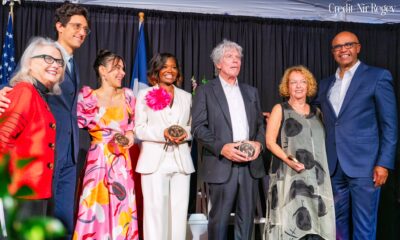Reiko Yamada Interview: ‘Sound Installation on Silent Movies’ @ Japan Society
Published
5 years agoon
Reiko Yamada spoke to The Natural Aristocrat about her virtual Japan Society performance, ‘Sound installation on Silent Movies’, a fresh audio aesthetic to broken accordions, and the composing process.
Interview with Reiko Yamada (Transcript):
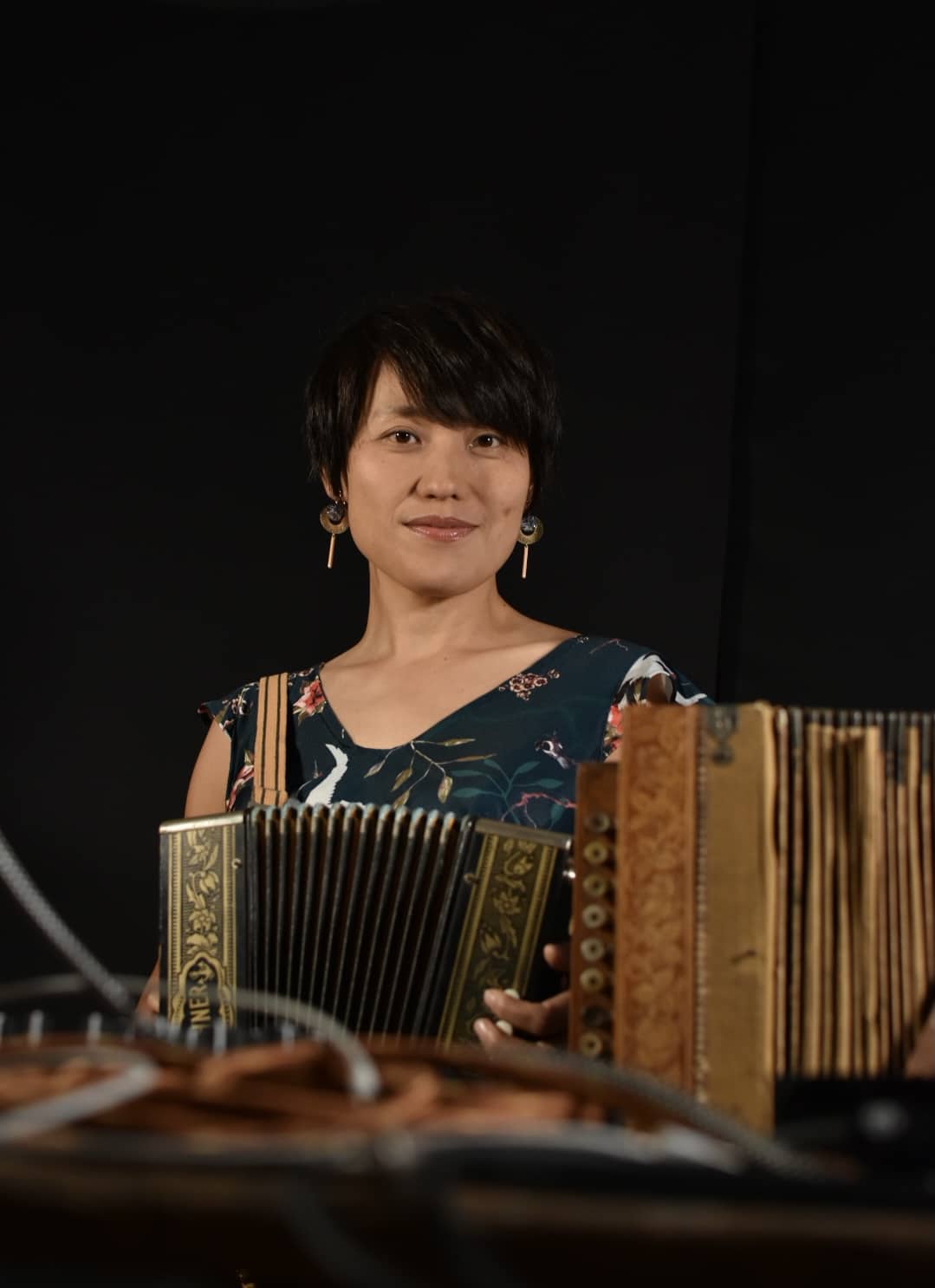
Reiko Yamada performing ‘Sound Installation on Silent Movies’ – Photo Courtesy of Japan Society / Reiko Yamada
The Natural Aristocrat [Nir Regev]: Hi Reiko, when I was listening to your Q & A at Japan Society, I was intrigued by your commentary on creating a quality audio aesthetic with a damaged instrument. Essentially, finding purity in something partially ruined that others would have just thrown away or maybe sold at a garage sale.
You mentioned the accordion used at Japan Society was about 85% percent broken during a documentary shoot and about 90% broken at the ‘Sound Installation on Silent Movies’ performance. Can you elaborate on this technique?
Reiko Yamada: You have a good memory! Well, it all started when I was working on my doctoral thesis in Composition.
As a graduate student going through a PhD program, I was really doubting myself. ‘What am I doing? When am I writing? Is this the right thing to do?’ And so on.
You know, it felt like I was trying to show the best of myself, which is to say, trying to be perfect as much as I could.Then in turn, I realized that that’s not who I am and I’m super cheesy about it.
I felt like I have to write something that really shows this imperfect self. And I kind of took this path to really search the vocabulary, to express the imperfection in music composition. Certainly, I’m not the first one to do it but yeah, the broken accordion project is just one of those projects.
Were you utilizing a Moog Synthesizer during some of the film sequences? I’ve always liked that synthesizer because of its use by composer Wendy Carlos in A Clockwork Orange.
This is actually the only instrument that I bought for this particular, Japan Society project. Just because the accordions that I have are missing some bass. And I thought that, okay, this Moog synth, it has been my dream to own one!
And this is basically the cheapest Moog that I could get. This is a base Moog. So I said, okay, I think this is the right moment to get one! (laughs)
You mentioned selecting the old-school Sumo wrestling match as the second film because it was different that what audiences are used to.
I’m a big sumo fan and I definitely noticed the sport looked a bit more brutal during that Japanese silent film in contrast to today. The fighters were also on the thinner side. Is the raw brutal-ness of that movie why you chose it?
I’ve gotten lots of comments like that. But I also wonder how many people apart from Japanese people have actually watched the official wrestling ones. Because there are so many that show this kind of a sitcom character or animation that depicts small wrestlers, but they are actually not small wrestlers.
So no, these wrestlers are really highly trained athletes and they have lots of muscles that they are very fast and very strong. To this day, small wrestling is passionately about speed. It’s true, I also saw that wrestlers back then seemed very small but I don’t think it’s just that.
You mentioned it was really important to you during the soundscape breaks, that people look away from the screen. Is it building on that same feeling where audiences look at their cell phones or take videos when they could be enjoying the moment?
Earlier when you introduced your performance at Japan Society, you commented on how the pandemic has affected you personally, the loss of the live audience.
Well, it’s just a very simple idea of, ‘How can I give acknowledgement that we’re having too much screen time in general?’ Let’s at least try to acknowledge that even within the performance using a screen.
So, I mean, I don’t know how well it worked. But also because I am a composer to start with, I just wanted to also make sure that there is a piece that’s purely audio without any visual support or distraction.
I wanted to make sure that there’s just an audio piece included in the production.
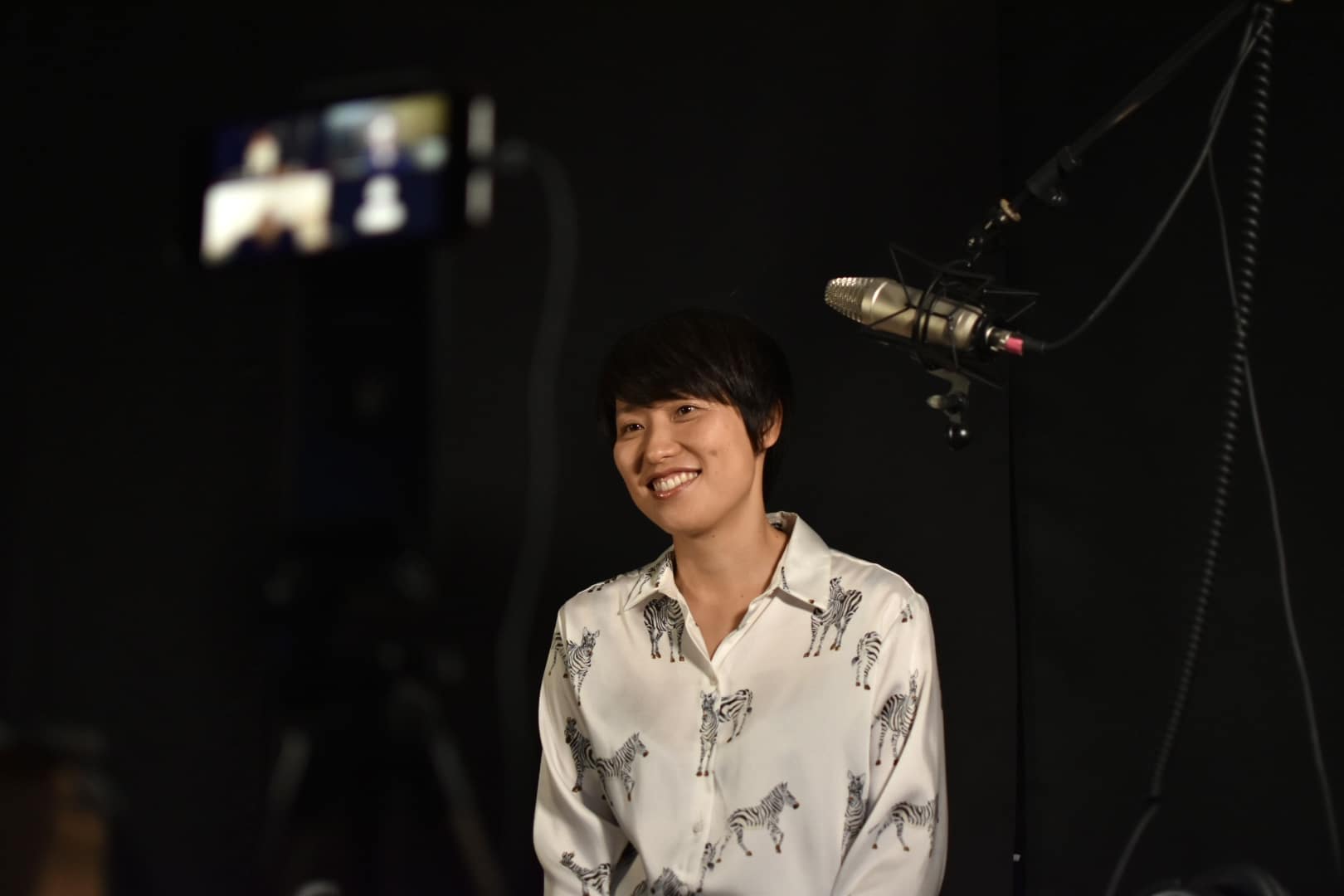
Reiko Yamada performing ‘Sound Installation on Silent Movies’ – Photo Courtesy of Japan Society / Reiko Yamada
As a composer, do you prefer using real instruments or digital samples? I noticed you utilized an accordion to create train steam sounds and that kind of thing. How often do you find yourself researching how to match a real life sound through an instrument?
I think there are composers and musicians who are really good at using the actual sounds. I mean, of course the film composers, they do it all the time, or a composer for animation, that’s not my speciality. I think what I can do is to be just inspired by what I see or what I hear and try to kind of share my inspiration in a very vague, very ambiguous manner. And then trying to build a new brand new piece out of it.
Hopefully, with this, I can create this kind of dreamlike atmosphere. That’s all I could do, I think from that perspective.
Yeah, I don’t even try to imitate, although in this train piece it was very clear that I was thinking about trains a lot when I was working with this old accordion. (laughs)
One of the most interesting things you mentioned during your Japan Society Q & A was how you preferred horror movies because they allow composers to try out experimental sounds. Unlike a comedy for instance.
Does comedy somewhat constrain you to having to see a visual while a horror allows you to explore within, audio-wise?
I think one very obvious thing is that in our society is Western functional harmony is the majority of what we have. So many of us have grown up with this kind of vocabulary, which means lots of consonance and dissonance is used to enhance the consonant harmony as a resolution.
So when we hear a dissonance, people wants to hear a consonance and, we, the composers of contemporary music are trained to look into dissonance in a much deeper way to see if there are any shades in dissonance.
And if there’s any way to create musical composition within the vocabularies of dissonance or the noise, or basically unconventional sounds. But for many people, as soon they hear this kind of vocabulary, people tend to associate that sound with fear or anxiety and so on.
So, if I want to really mix or make use of this kind of vocabularies in all subtleties. I think the horror movies fit very well. But for comedies, I think I would have to, well I don’t have to, but I think it’s more appropriate to take a path of using more functional harmony and therefore using more consonant harmonies. And so on.
I really liked in the last section of the performance where you had split screen boxes, half with the cartoon, half with your performance. It was an amazing aesthetic, I was actually surprised you didn’t use it for the whole thing. I was wondering how that visual came about?
Yeah, I liked that as well! I have to confess that it is my production assistant who had this idea and he tried it and I really liked it. So we keep kept it.
But the idea for this whole project is… I mean, first of all this is a very, very hard project for me. Normally, when I start composing because I have some experience working with live music.
And working with live musicians I immediately have a sense of, ‘Oh, maybe this can connect with audience and maybe this needs a bit more help’ and so on. But I did not have a clue of what can, what kind of materials can reach the audience.
And of course I want to try something experimental, so that people have some kind of new experience every time. I was at loss.
So then I had this strategy of, ‘Okay, let’s try just throwing something different for each film to see, and just hope that maybe one of them would grab people’s attention and maybe they would like it’. So musically I did that. I don’t know how clear it was, but visually I wanted to try using different layouts, different approaches to basically split the screen into two frames.
What composers do you feel most influenced you?
(laughs) That is a extremely difficult question because I have been influenced by so many composers. But just today I was reading a lot about John Cage and of course John Cage, I mean, nobody needs an introduction nowadays.
Since I am right now working with scientists of quantum theory, and we are looking at randomness and, predictability in quantum theory and I’m searching a way to connect that to music composition. And when you talk about the randomness, John Cage is an extremely important figure.
He did not just use very simple randomness as he first looked into Yi Jing and with his philosophies to start with. But then he also tried using computer assisted algorithm competitions with the help of a programmer. And he really, really tried exploring many different kinds of randomness. I really admire him, I must say.
I’ve actually spoken to a composer recently that mentioned algorithm software to create music. I was wondering how you felt about that as a composer yourself? Do you feel there’s a possibility someday that composers will be mostly replaced by machines and synthetic sound?
I think we should really find a good balance of getting some help from computer assisted AI and algorithms to reach aesthetically what we’re looking for.
What drew you to music originally? Was there a certain spark when you were younger when you realized you wanted to be a composer?
I think, it is basically a boredom! I’m laughing about it but I’m really serious that boredom played such an important role when I was growing up to become who I am now.
And certainly it was not fun but I think I was so bored. I had so much time at home alone, so I wanted to do something. Just because I had some instruments around me, I was able to play piano a little bit.
Although I quit piano lessons very early, I ran out of scores to play and I started to compose music so that I can play. So without all that time of being bored, I don’t think I would have been a composer today.
Do you feel composing is an isolating experience in some way? I’ve spoken to a lot of composers over the years and I somewhat get that impression of being lost within the confines of the studio.
So many, hours, days, months can pass seamlessly. I feel they get less time to talk with others because of it. I was wondering how you feel about that?
Well, I think it’s true the act itself is a very solitary act… But all the time because I write music, oftentimes for musicians to play on the stage and if you say installation, I usually work with people. So when I write music, I’m imagining a lot about my performers and a venue that takes place.
So, although it’s a solitary act itself, the time that I spend composing is really imagining this ‘together-ing’ or this community that’s come together on the day of the premiere. So for me, it’s not a lonely activity at all.
When you’re working on a project and it’s not quite working… Is it better just to start over or do you feel if you work on something long enough, that it’ll eventually become good?
That’s a great question! I’m still searching for the answers. I try all kinds of things. I mean these days, I just stop but when I was younger, I was so desperate that I would try taking a shower.
I went running, I did all kinds of things. Then come back to the piano and try again. ‘Okay… Let’s try doing some pushups and try again!’
But you know, now I am bit more relaxed that, okay, well, I’ll just do other things and tomorrow I’ll try again.
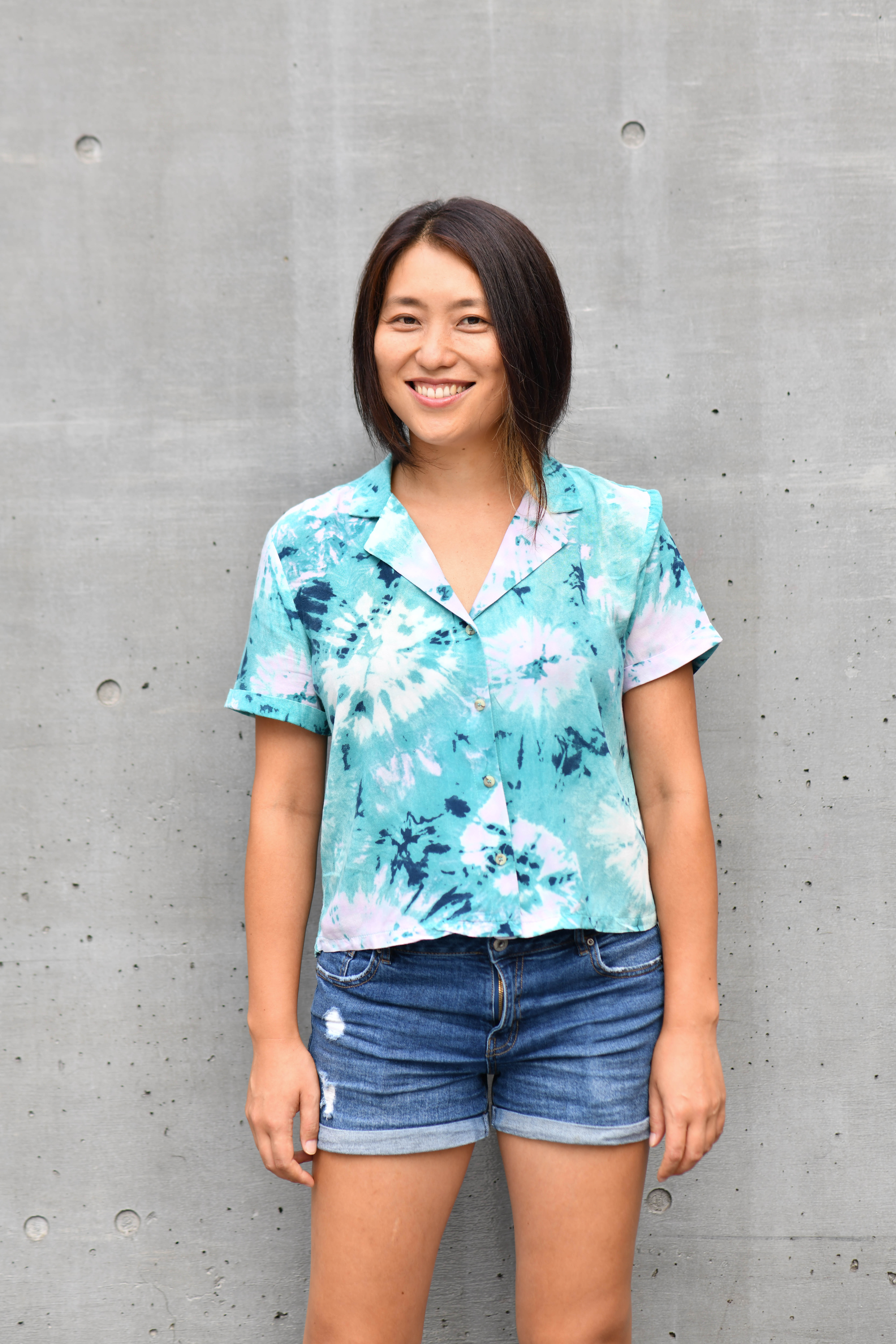
Reiko Yamada – Photo Courtesy of Reiko Yamada
I really liked the choice for that last music video intro piece, the purple shaded cartoon from Columbia Records. what drove that selection? I liked that you performed a futuristic version of the theme right after.
Yeah, I think I had maybe 15 or so films to choose from. The first thing that I definitely wanted to do was small archive, this documentation of small wrestling.
I definitely wanted to work with that because I was so fascinated to have seen this small wrestling from 1900s. And then I thought that trains go very well with accordions. So I picked that and I realized that, okay, this is getting kind of serious.
So I needed something a bit like lighthearted and this one also had a music to it already. So I thought, okay, this is a good challenge for me.
To try to do something where there’s already music and to work with it or to add something to it or take it out completely. And yeah, I like when I don’t know what to do exactly but I can feel that there is maybe opportunity for me to discover something.
During your Japan Society Q & A you mentioned accordions as a kind of polarizing instrument. That some people love them. Some people hate them.
My father actually is an accordion player. He’s obviously always loved the accordion. I’m curious why you feel accordions get such a bad rap or reputation from some and what drew you to it?
Yeah, just because of this project that I have for maybe about seven years. I actually don’t consider myself an accordion player. I can only play broken accordions well (laughs) but because of this project, I get to talk to people a lot about accordions in general. And I realize that some people have very strong opinions about this instrument.
And to give you an example, the person who gave me his accordions, He got these accordions, maybe three dozens of accordions from a widower. And her ex-husband was a big collector of antique accordion but he passed away.
She found a new partner to live with her… But she still had all these accordions in her house! And she had put all of them in the attic but then somehow she felt that these accordions are creepy and watching her.
So she had moved all of them into the shed and still, she kind of felt that these instruments are projecting strange energy. Therefore, she called one day to a friend of mine who gave me the accordions that, ‘Okay, I cannot take this anymore! You have to come and get them right now! I put all of them on my front yard.’
So my friend went there with a truck and it started raining. As soon as he arrived, he tried to collect all the accordions, put them in the truck and then drove back & put them in a safe place. But you know, this story really made me think of, yes, these are instruments.
But because each one of them has such a strong character. They are so different, you know? How it looks and which key they are in and so on.
It really resembles a bit like an animal. Maybe that freaks some people out, that that’s my opinion.
I mean, ‘The Haunted Accordion’ could be a movie for sure!
And you know, that there’s so many accordion jokes! I should try them or maybe I shouldn’t… (laughs)
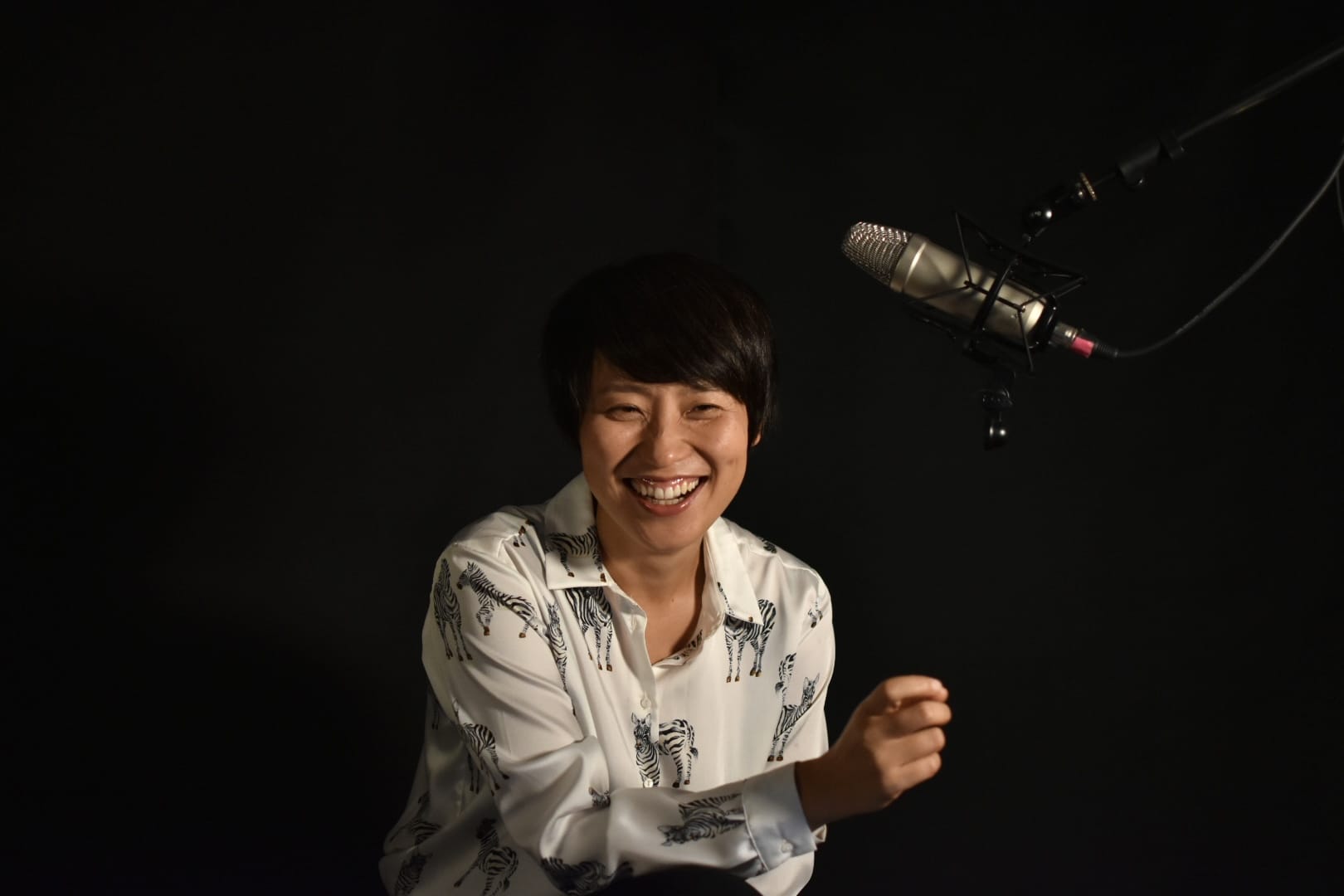
Reiko Yamada performing ‘Sound Installation on Silent Movies’ – Photo Courtesy of Japan Society / Reiko Yamada
How long did it take to put this entire project together from start to finish? I know every minute that seems like nothing from experience actually can take like a whole day, maybe a whole week, even. What was it like putting the Sound Installation together without a live test or practice audience really?
I think we started talking about this project in December and I think in spring… I would say March or April, we had more concrete ideas of which films can maybe work with this project and so on. And I actually started to work on this full-time, two and a half months ago and I just finished. Yeah, like you said, it’s not very long, you know, in total, probably 45 minutes for three films.
But in this case I had to work all at home. It was also about shooting with a good light. You have to do some research and so on. All included, I’d say two months and a half.
You mentioned the 85% Broken documentary about your accordion. Where can fans watch it?
Yes, the documentary film about the broken accordion project, 85% Broken is free and available on YouTube and Vimeo.
85% Broken from Blue Magnolia Films on Vimeo.
Awesome, thanks Reiko!
Thank you!
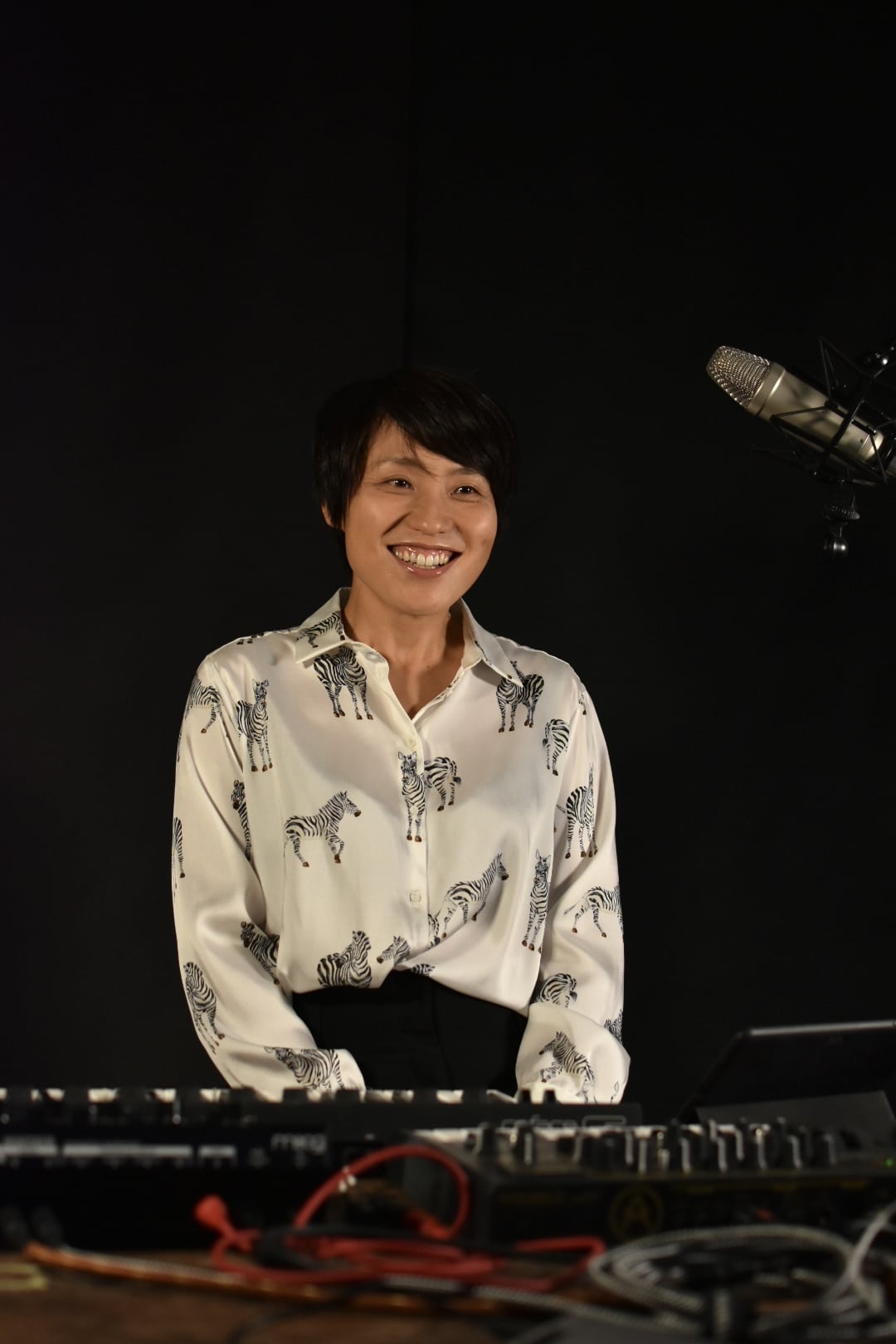
Reiko Yamada performing ‘Sound Installation on Silent Movies’ – Photo Courtesy of Japan Society / Reiko Yamada
About Reiko Yamada’s Sound Installation on Silent Movies:
Composer and high-tech sound artist Reiko Yamada (2015-16 Fellow at the Radcliffe Institute for Advanced Study at Harvard University and the 2016-17 artist-in-residence at IEM in Austria) uses the latest technologies in electronic and acoustic music “installation” to bridge the gap between time and space.
For this commission, Yamada will perform on old, broken accordions, transforming their sounds with her novel ways of audio processing to accompany Japanese silent films from the early 20th century. She will redefine the concept of “pastimes” in her avant-garde scores set to antiquated images of sumo matches, train travel and animations.
Be sure to go to Japan Society to stream Reiko Yamada’s Sound Installation on Silent Movies performance online!
The Japan Society NYC performance will be available to stream on-demand until November 4th. The production contains Japanese silent movies from the black & white silent era of motion pictures. Each of the three films are accompanied by a multitude of instruments in a variety of contexts. The show subtly explores the aesthetic concept of imperfection.
– Check out the Japanese Films section for more news, reviews, and interviews with the industry’s cutting edge talent.
Visit Reiko Yamada’s official website to learn more about the composer and sound artist’s works.
Nir Regev is the founder of The Natural Aristocrat. You can directly contact him at [email protected] for coverage consideration, interview opportunities, or general comments.

You may like
-


ChaO (2025) Anime Movie Review | Fantasia Festival
-
![Gakuryū Ishii Interview: The Box Man movie at Japan Society. Photo Credit: © 2024 Nir Regev - The Natural Aristocrat® [TheNaturalAristocrat.com]](https://thenaturalaristocrat.com/wp-content/uploads/2024/08/gakuryu-ishii-interview-the-box-man-movie-the-natural-aristocrat-photo-by-nir-regev-400x240.jpg)
![Gakuryū Ishii Interview: The Box Man movie at Japan Society. Photo Credit: © 2024 Nir Regev - The Natural Aristocrat® [TheNaturalAristocrat.com]](https://thenaturalaristocrat.com/wp-content/uploads/2024/08/gakuryu-ishii-interview-the-box-man-movie-the-natural-aristocrat-photo-by-nir-regev-80x80.jpg)
Gakuryū Ishii Interview: The Box Man movie at Japan Society
-
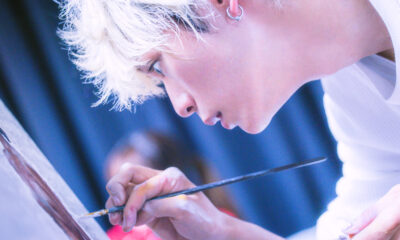

Blue Period Review: Our favorite feature film of Japan Cuts 2024
-
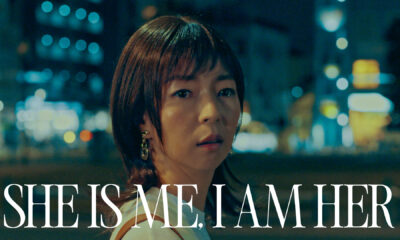

Mayu Nakamura film “She is me, I am her” coming to SAKKA VOD
-
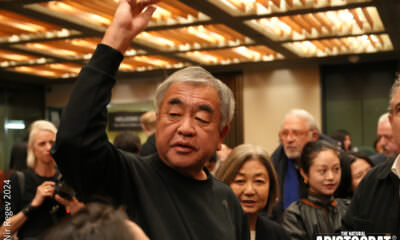

Photos: Architect Kengo Kuma at Japan Society NYC Reception
-
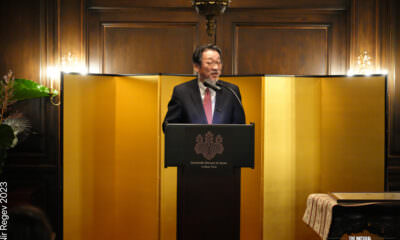

Ambassador Mikio Mori: Anime NYC Commendation Speech







